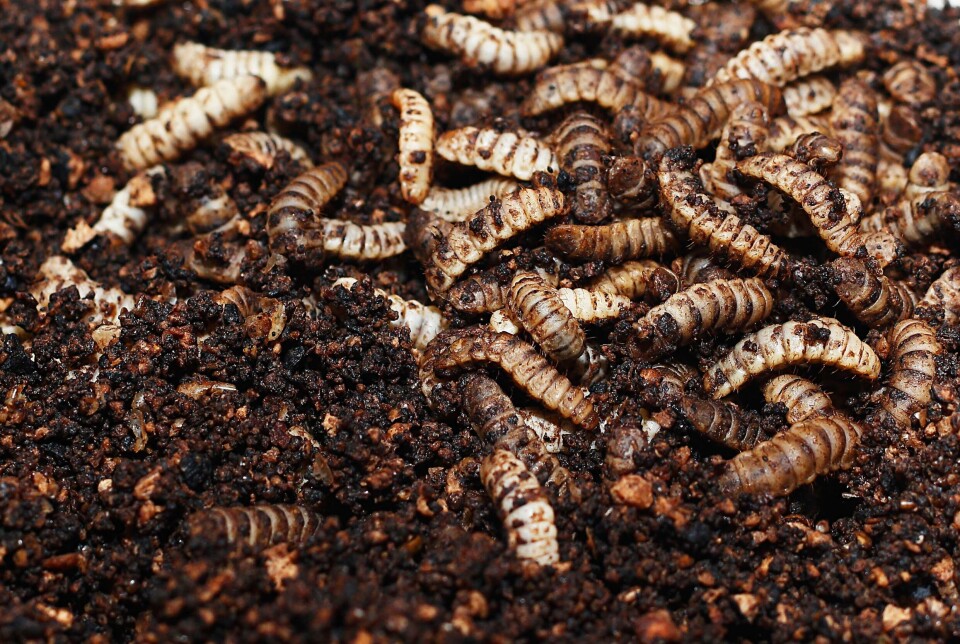THIS CONTENT IS BROUGHT TO YOU BY Nofima The Norwegian Institute of Food, Fisheries and Aquaculture Research - read more

What do chickens that eats larvae taste like?
Insects in chicken feed results in meat with the same taste and nutritional content. But for now, the process is far too expensive.
It is natural for chickens to eat larvae. Nofima researcher Rune Rødbotten and colleagues from all over Europe have now found that it is perfectly fine to use larvae in feed for chickens that will be consumed by humans.
These chickens grow just as fast and taste the same as chickens that have eaten ordinary chicken feed, i.e., feed comprising mostly of grain.
The chickens have been fed larvae from black soldier flies. These larvae can grow on food waste, and they are known for being rich in protein. In the trials, 20 per cent of the traditional feed was replaced with larvae.
Can be replaced
The Norwegian researchers have compared how this affects the meat quality of the chickens. Italian colleagues have checked animal welfare, growth rate, intestinal health, and taste. Protein content, fat, and tenderness are the same.
The meat is just as good, and just as digestible.
“There are no differences, neither positive nor negative. The chickens that ate the larvae didn’t grow faster or slower. The consistency of the meat is also the same. If the meat is frozen, it loses the same amount of fluid,” Rødbotten says.
In other words: The chicken fed on regular chicken feed can be replaced by chicken fed on insect larvae without you noticing the difference.
Less pecking
The researchers have found only two small differences. The chickens that have eaten larvae get slightly yellower flesh.
However, only breeds of chicken that grow very slowly have been tested in these trials. They live six times longer than regular Norwegian chicken breeds before they are slaughtered.
With a shorter lifespan and fewer meals, it may well be that this difference will disappear completely in an ordinary Norwegian chicken.
The second difference is good news when it comes to animal welfare. Some of the chickens were given dried larvae mixed into regular feed, while others had to peck at the ground for living larvae themselves.
“We saw that the chickens that had to scrape the ground and pick up live larvae didn’t peck the other chickens as much. They were more occupied trying to find and pick up the live larvae than they were with each other. This is a positive side effect,” Rødbotten says.
Little interest from the industry
So far, researchers have not given the chickens feed consisting of 100 per cent larvae. They didn’t know enough about the nutritional content of the larvae, so they started at 20 per cent to make sure it did not have a negative effect on animal welfare.
Not long ago, the larvae were approved as chicken feed, so it is fully possible to start feeding chickens on soldier fly larvae straight away.

“So far, however, there has been very little interest from the Norwegian industry. We tried to get some Norwegian companies involved in the research project, but none of them were interested in participating,” Rødbotten says.
This is primarily due to the fact that this project only dealt with organic chicken that grows very slowly.
Rødbotten would have liked to have made comparisons with the common chicken breeds that one finds in Norwegian stores, but he did not get the opportunity to do so this time.
Too expensive
It is the economic aspect that is the problem when it comes to insects in feed. Despite the fact that the chickens thrive and their meat is nutritious and tastes good, insects are too expensive at the moment.
“The German researchers we collaborated with have conducted life cycle analyses. They found that this was definitely not economically profitable. You have to use a lot more labour on producing the larvae. They must be harvested at exactly the right time,” he explains.
The larvae grow at a constantly quick rate, all week long, so there is no point in leaving them on Friday afternoon and hoping that they are just as good and nutritious on Monday morning.
For the sake of knowledge
In addition, energy is needed to heat the houses in which the larvae grow. This affects the environmental accounts of an insect production process that would otherwise be very kind to the climate and the environment.
“The cost would be twice as much as regular feed. And these larvae are produced in Belgium – it would have been even more expensive in Norway,” Rødbotten says.
It is possible to improve the numbers if production is large enough, but the researchers have not looked at this yet.
“If we really want to succeed, and politicians put regulations or taxes in place, it is entirely possible. The purpose of a project like this is to show that it is possible,” Rune Rødbotten says.

This content is paid for and presented by Nofima The Norwegian Institute of Food, Fisheries and Aquaculture Research
This content is created by Nofima's communication staff, who use this platform to communicate science and share results from research with the public. Nofima is one of more than 80 owners of ScienceNorway.no. Read more here.
More content from Nofima:
-
Red algae grown in wastewater from fish-farming facilities could become sustainable salmon feed
-
Pumpkins are good for more than just Halloween decorations
-
This is how temperature affects a salmon's health and growth
-
Study: Omega-3 and zinc is a powerful duo for salmon
-
Fish may turn yellow if frozen too fresh
-
Is it better if food is packaged in plastic or paperboard?





































